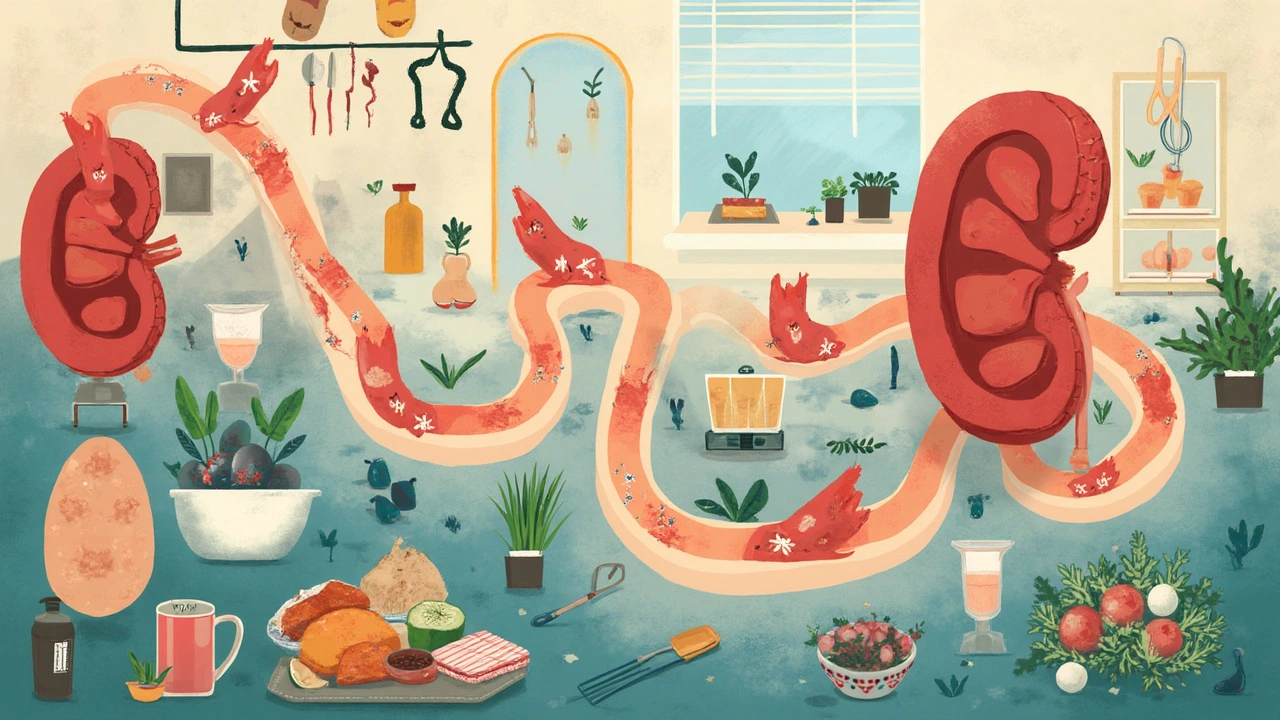Food Safety Made Simple: Everyday Tips to Protect Your Health
Ever wonder why that leftover looks a little off after a few days? Or why the kitchen feels sticky after chopping raw chicken? Those moments are clues that something in your food handling could go wrong. The good news? Fixing it is easier than you think. Below are straight‑forward steps you can start using today to keep your meals safe and your stomach happy.
Clean, Separate, Cook, Chill – The Four Pillars of Food Safety
Clean means washing hands, surfaces, and produce. A quick 20‑second soap wash before you start cooking wipes out most germs. Rinse fruits and veggies under running water; you don’t need fancy sprays, just water does the trick.
Separate is all about avoiding cross‑contamination. Use one cutting board for raw meat and another for veggies. If you only have one board, give it a good wash with hot, soapy water between tasks.
Cook at the right temperature. A meat thermometer is your best friend—aim for 165°F (74°C) for poultry, 145°F (63°C) for whole cuts of pork or beef, and 160°F (71°C) for ground meat. When you hit those temps, harmful bacteria die off.
Chill quickly. Refrigerate leftovers within two hours, or one hour if the kitchen is hot. Keep your fridge at 40°F (4°C) or below, and your freezer at 0°F (‑18°C). When in doubt, throw it out—food that’s been left out too long can become a breeding ground for toxins.
Common Mistakes and Quick Fixes
Many people think “a little smell means it’s fine.” Actually, odor is a late warning sign. If something smells sour, off, or just weird, discard it.
Another myth: “If I reheat food, it’s safe.” Reheating can kill some bacteria, but not the toxins some produce. Make sure you heat leftovers to a rolling boil or 165°F throughout.
Don’t forget the fridge shelves. Store raw meat on the bottom rack so juices can’t drip onto ready‑to‑eat foods. Use airtight containers for leftovers to keep out moisture and bacteria.
Lastly, check expiration dates, but don’t rely on them alone. Dates are about quality, not safety. Trust your senses and the storage rules above.
Putting these habits into a daily routine doesn’t require a kitchen overhaul. Start with one tip—maybe a quick hand wash before each meal—and build from there. Over time, safe food handling becomes second nature, and you’ll notice fewer trips to the doctor for stomach upset.
At Pharma 24/7 we’re all about giving you reliable, easy‑to‑use health advice. Use these food safety basics whenever you shop, prep, or store food, and you’ll protect yourself and your loved ones from hidden dangers. Stay safe, stay healthy, and enjoy your meals without worry.
Salmonella's Connection to Kidney Disease: What You Need to Know
Mar, 10 2025
Salmonella, a common cause of foodborne illness, can have unexpected impacts on kidney health. While most associate salmonella with upset stomachs, recurring infections may increase the risk of kidney disease. Understanding this connection is key to preventing serious health issues. Safe food handling and awareness could play significant roles in protecting kidney health. Delving into these aspects helps reveal the unseen links between diet, bacteria, and disease.
Read Article→
